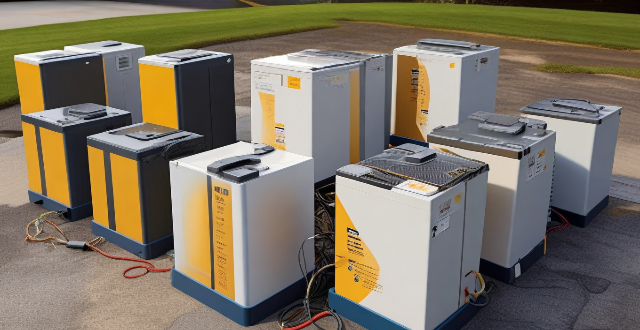Flow batteries are a type of rechargeable battery that store energy in two chemical solutions pumped past an ion-exchange membrane. Key components include electrolyte tanks, pumps, and the cell stack. During charging, electrical energy is converted into chemical energy by moving ions across the membrane, storing them as potential gradients. Discharging reverses this process to generate electricity. Flow batteries offer scalability, decoupling of power and energy, long lifespan, and good efficiency but face challenges like cost, maintenance, and size. They are suitable for large-scale energy storage applications.

Working Principle of a Flow Battery for Energy Storage
Flow batteries are a type of rechargeable battery that store energy in the form of two chemical solutions, which are pumped past an ion-exchange membrane. The main components of a flow battery system include electrolyte tanks, pumps, and the cell stack where the actual electrochemical reaction takes place. Let's delve into the working principle:
Key Components
- Electrolyte Tanks: Store the positive and negative electrolytes, which carry the active chemicals.
- Pumps: Circulate the electrolytes through the system.
- Cell Stack: Contains multiple cells, each with electrodes and an ion-exchange membrane.
Charge and Discharge Cycles
During Charging:
- Electrical energy is converted into chemical energy.
- An external power source applies voltage to the cell stack.
- Ions from the positive electrolyte solution move through the membrane to the negative side, becoming reduced in the process.
- Conversely, ions from the negative electrolyte are oxidized and move to the positive side.
- This separation of charges across the membrane stores energy as potential chemical gradients within the solutions.
During Discharging:
- Chemical energy is converted back into electrical energy.
- The stored ions in the electrolytes naturally want to move back to their original sides to reach equilibrium.
- As they do so, they pass through the membrane, generating an electric current that can power a load.
- The discharge process continues until the concentration gradient between the two electrolytes diminishes.
Features and Advantages
- Scalability: The amount of energy storage is determined by the size of the electrolyte tanks rather than the size of the cell stack.
- Decoupling of Power and Energy: The power output (determined by the cell stack) can be designed independently from the total energy storage capacity (determined by the volume of electrolytes).
- Long Cyclic Life: Flow batteries can endure thousands of charge and discharge cycles without significant degradation.
- Efficiency: While not as efficient as some other battery types, flow batteries offer good round-trip efficiency, typically around 70% to 80%.
Challenges and Considerations
- Cost: The initial setup can be expensive due to the materials used in the membranes and electrodes.
- Maintenance: The system requires periodic maintenance to replace or replenish the electrolytes and to maintain the integrity of the pumps and membranes.
- Size and Weight: Larger systems require substantial space and can be heavy due to the need for large electrolyte tanks.
In summary, flow batteries represent a unique approach to energy storage that offers advantages in terms of scalability and lifespan. They are particularly well-suited for applications requiring large-scale energy storage over extended periods, such as grid stabilization or storing energy from renewable sources like solar and wind.